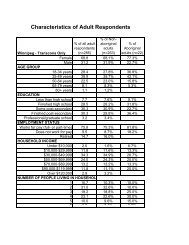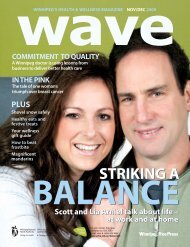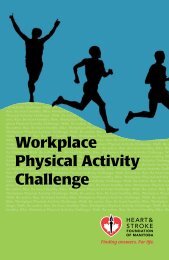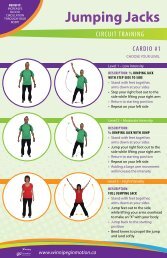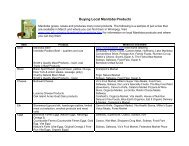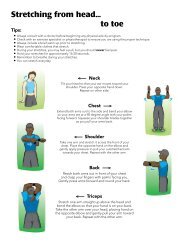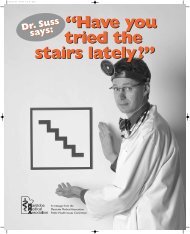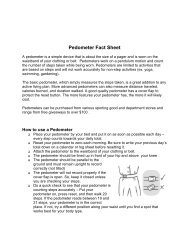Wave: March / April 2010 - Winnipeg in motion
Wave: March / April 2010 - Winnipeg in motion
Wave: March / April 2010 - Winnipeg in motion
Create successful ePaper yourself
Turn your PDF publications into a flip-book with our unique Google optimized e-Paper software.
How we hear<br />
1 Sound travels down the ear canal and hits the<br />
eardrum.<br />
2 The eardrum is taut, like the sk<strong>in</strong> of a real<br />
drum, and it vibrates when sound hits it.<br />
3 This vibration is passed down the cha<strong>in</strong> of<br />
bones to the cochlea (the <strong>in</strong>ner ear).<br />
5<br />
6<br />
4 The vibrations make the fluid <strong>in</strong> the cochlea<br />
move.<br />
1<br />
2<br />
3<br />
4<br />
5 This movement, <strong>in</strong> turn, makes the hair cells<br />
move. When this happens, the hair cells<br />
produce t<strong>in</strong>y electrical signals that are<br />
picked up by the auditory nerve. Hair cells at<br />
one end of the cochlea send low-pitch sound<br />
<strong>in</strong>formation <strong>in</strong> these signals, and those<br />
at the other end send high pitch<br />
sound <strong>in</strong>formation.<br />
6 These electrical signals<br />
pass up the auditory<br />
nerve to the bra<strong>in</strong>.<br />
7 The bra<strong>in</strong> <strong>in</strong>terprets<br />
the electrical<br />
signals as sounds.<br />
Audio Processor<br />
Implanted Coil<br />
How the<br />
Vibrant<br />
Sound-bridge<br />
works<br />
The Vibrant Soundbridge is not a<br />
conventional hear<strong>in</strong>g aid. A hear<strong>in</strong>g<br />
aid takes sound and makes it louder.<br />
The Soundbridge takes sound and<br />
converts it to mechanical vibrations.<br />
By directly attach<strong>in</strong>g to one of the<br />
three small bones (the <strong>in</strong>cus) <strong>in</strong> the<br />
middle ear, the Soundbridge mechanically<br />
causes the ossicles to vibrate <strong>in</strong><br />
much the same way that sound<br />
(acoustic vibrations) travell<strong>in</strong>g down<br />
the ear and through the eardrum<br />
causes these bones to vibrate.<br />
These acoustic vibrations are amplified,<br />
however, to compensate for the loss<br />
<strong>in</strong> sensitivity of the <strong>in</strong>ner ear.<br />
With a Soundbridge, the ear canal is<br />
open – noth<strong>in</strong>g is placed <strong>in</strong> it – unlike<br />
with acoustic hear<strong>in</strong>g aids.<br />
Float<strong>in</strong>g Mass Transducer<br />
Conductor L<strong>in</strong>k<br />
30 WAVE<br />
Source: Vibrant Med-El;<br />
Nucleus Medical Illustrations




